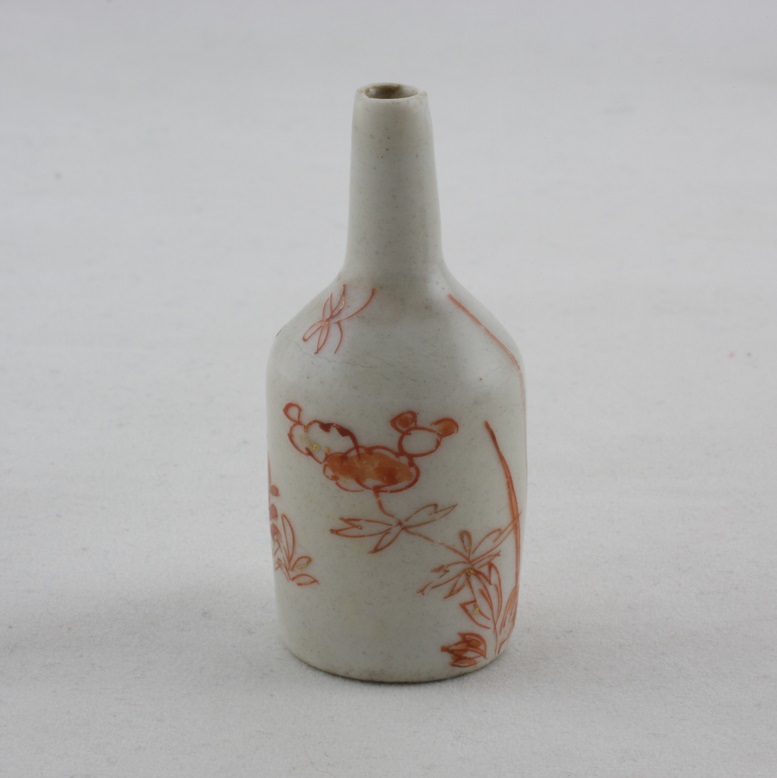
Japanese Imari 1690-1800 - Imari with no Underglaze Blue, Iron-red and Gold only - Page 1
Object 2011789
Miniature bottle
Japan
1690-1720
Height 52 mm (2.05 inch), diameter of mouthrim 5 mm (0.20 inch), diameter of foot 20 mm (0.79 inch), weight 18 grams (0.63 ounce (oz.))
Miniature cylindrical bottle on a flat unglazed base, the shoulder tapering into a long, narrow neck. Imari decorated in overglaze iron-red and gold with grasses, flowering plants and insects in flight.
The use of this miniature bottle is unknown, It is too large to be placed in a doll's house. In general, miniatures were included in groups of decorative porcelain placed on shelves, brakets and consoles in the Dutch interior, or in the porcelain rooms of the grand houses such as those still in Pommersfelden and Charlottenburg, Germany. Similar miniature objects were also made of silver and glass, and the pieces of Japanes (and Chinese) porcelain fit into the general trend. (Jörg 2003/1, p.190)
In O. Impey's "Japanese Export Porcelain. Catalogue of the Collection of the Ashmolean Museum, Oxford", Category 36, is devoted to coloured Imari with no underglaze blue, red and gold only. The implication of this singular restriction of palette, without the use of underglaze blue, is that these may be the product of a single enamelling workshop, but may or may not be the product of a single kiln. The restriction is probably one of choice, for it would hardly be cheaper, if at all, to use a wider range of enamels, and no cheaper to use underglaze blue. (Impey 2002, pp.220-221)
Condition: A shallow glaze frit to the rim.
References:
Price: € 299 Currency Converter


 create websites
create websites